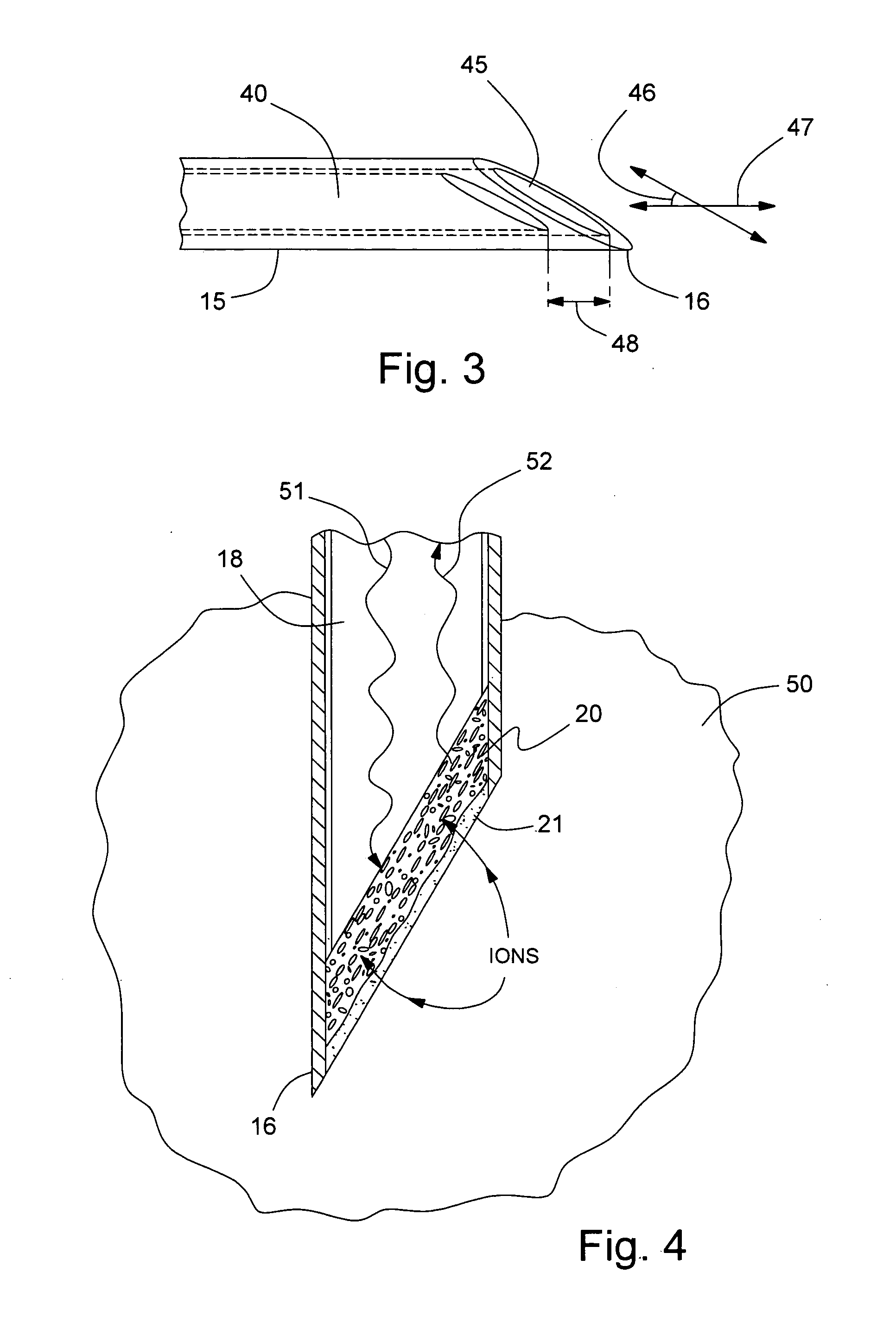Microsensor needle for pH measurement in tissue
a microsensor and tissue technology, applied in the field of microsensor needles, can solve the problems of cellular damage, ischemia can occur, and the probes are relatively expensive, and achieve the effects of low manufacturing cost, accurate ph measurement, and convenient use and sterilization
- Summary
- Abstract
- Description
- Claims
- Application Information
AI Technical Summary
Benefits of technology
Problems solved by technology
Method used
Image
Examples
Embodiment Construction
[0021]Referring to FIG. 1, a sensor probe assembly 10 includes a needle section 11, a housing section 12, and a cable bundle section 13. Needle section 11 includes a hollow, cylindrical needle 15 having a tip 16 and a backend 17 which is retained in housing section 12. Needle 15 is preferably comprised of stainless steel. Needle tip 16 has a planar profile that is slanted at a predetermined angle with respect to a longitudinal axis of needle 15. A first end of a light conduit 18 of an optic cable is contained within needle 15 and is spaced a predetermined distance from tip 16 in order to create a cavity for containing a porous dye layer 20 and an overcoat layer 21. Housing section 12 includes a main body 23 and a stitch-on disk 24. Main body 23 receives backend 17 of needle 15 and secures it therein. A thermistor 25 is attached to the backend 17 of needle 15 by a heat conductive adhesive 26. A thermistor such as the A070M-SC30BF10A from Thermometrics, Inc., can be employed. A signal...
PUM
| Property | Measurement | Unit |
|---|---|---|
| angle | aaaaa | aaaaa |
| length | aaaaa | aaaaa |
| longitudinal thickness | aaaaa | aaaaa |
Abstract
Description
Claims
Application Information
 Login to View More
Login to View More - R&D
- Intellectual Property
- Life Sciences
- Materials
- Tech Scout
- Unparalleled Data Quality
- Higher Quality Content
- 60% Fewer Hallucinations
Browse by: Latest US Patents, China's latest patents, Technical Efficacy Thesaurus, Application Domain, Technology Topic, Popular Technical Reports.
© 2025 PatSnap. All rights reserved.Legal|Privacy policy|Modern Slavery Act Transparency Statement|Sitemap|About US| Contact US: help@patsnap.com



